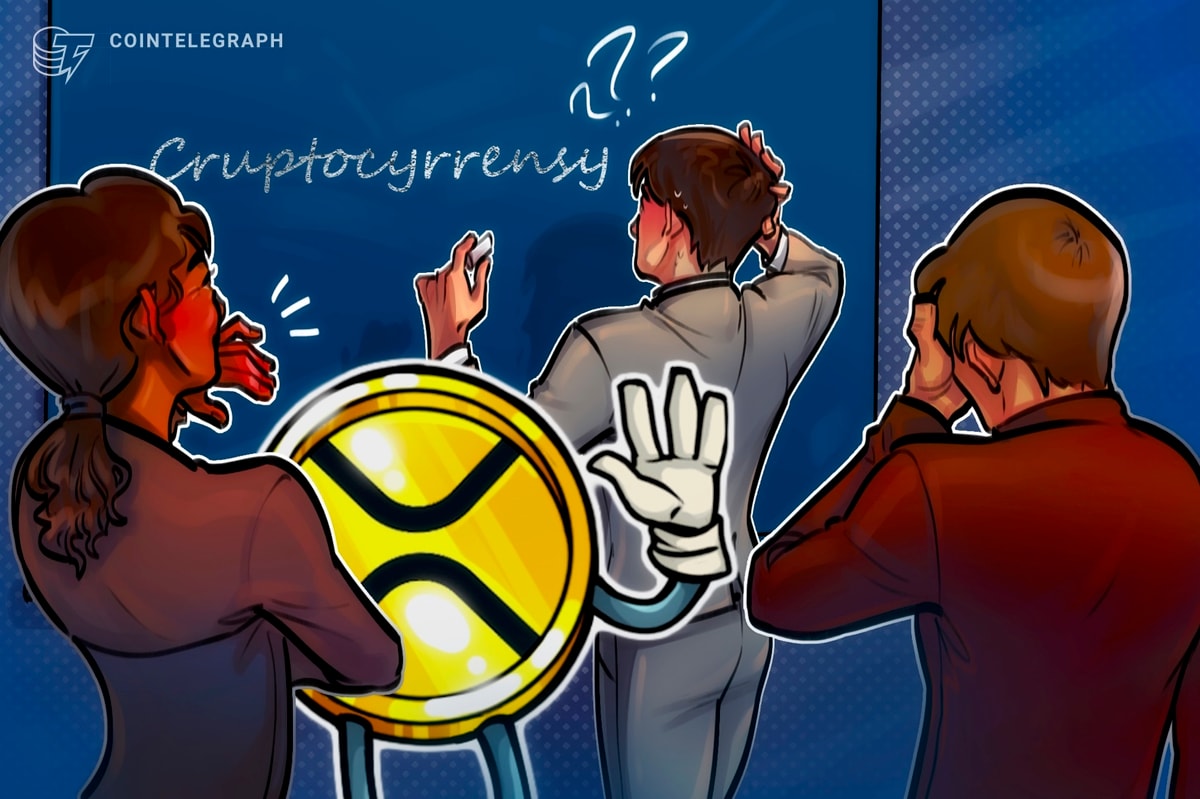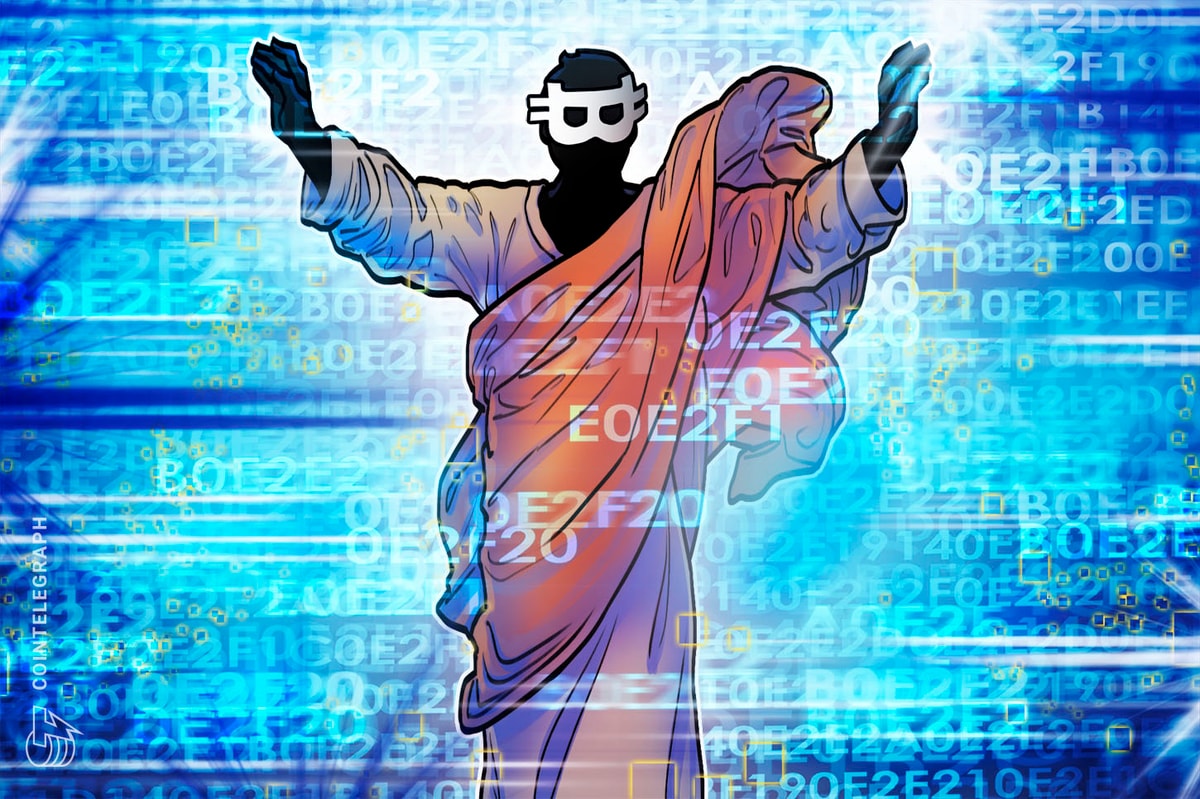
This is the second in a series by Aaron van Wirdum focusing on real people who use cryptocurrencies. Read about his earlier experiences in Italy here: "Real Users": In This Mountain Town, Everyone Knows About Bitcoin.
The straight stone road from the partially crumbled city wall to the scaffolded church in the center of the central Italian town of Norcia is empty. It glimmers a bit from the rain; the weather is unusually wet for this region today. Tourists and day-trippers that would usually be strolling around the historic town center on Saturday afternoons like these are nowhere to be seen.
Bad luck for Ilaria and Lorenzo. The couple — both in their thirties, both wearing thick coats, scarves and beanies to keep themselves warm — set up a small mobile bar near the end of the street, under a white marquee; the inside is decorated with pictures of flowers. It’s all part of a local street market festival.
There, they sell saffron and beer produced with saffron, produced from the thin reddish stalks plucked from the crocus. It’s a delicacy, Lorenzo explains, as he hands out taster-sized plastic cups with beer. “Pound-for-pound among the most expensive products in the world,” he says.
It’s been almost 18 months since the Norcia area was struck with a seismic shock of 6.2 on the Richter scale: an earthquake that many of the old brick homes typical of the Mediterranean countryside could not withstand. Whole street blocks had collapsed, claiming hundreds of casualties.

Ilaria and Lorenzo got out safely, but their home was destroyed and their town, San Pellegrino di Norcia, is abandoned. They now live in a small, prefabricated house on the edge of Norcia.
Yet, Ilaria and Lorenzo have been able to keep their saffron business running, even after disaster struck their lives. They rebuilt parts of their organic plantation with financial help from Legambiente, a charity-based NGO dedicated to the earthquake recovery efforts.
This financial help did not come in euros. Legambiente had no euros left, Ilaria and Lorenzo were told when they applied for a reimbursement about a year ago; only bitcoin. The two had heard of the digital currency a couple of years ago when they were researching local money systems. But they had never owned any themselves.
“We would have preferred euros if it was available,” Ilaria admits, sitting down on one of the wooden benches they installed in the marquee. There are no potential customers stopping by, so she has time to talk about her experience. “But bitcoin was, of course, better than nothing, so we gladly accepted.”
Helperbit

The reason Ilaria and Lorenzo received bitcoin is Guido Baroncini Turricchia. The 39-year old Italian environmental engineer is the founder of Helperbit, a Rome-based startup that leverages bitcoin for fundraising campaigns.
Bitcoin is particularly well-suited to these types of causes, Baroncini Turricchia thinks, because of the transparency it provides. Through Bitcoin’s public blockchain, donors can trace the funds they donate and be sure that they really end up at the Bitcoin addresses of the intended recipients of the money — and nowhere else.
“Helperbit was only four months old when disaster struck Norcia,” Baroncini Turricchia recalls, as we are driving in his car from Rome to the disaster-struck town.
“For any natural disaster it takes a couple of days before media attention catches onto the scope of the event and for donation infrastructure to be set up. As the fundraising campaign starts, the amount of incoming donations reaches a peak within one or two weeks. It then fizzles out over the next couple of months or years,” he explains, as he uses his finger to draw a long-tailed, skewed bell-curve through the fogged interior of the windshield in front of him.
The number of incoming donations for Norcia had already passed its peak when Baroncini Turricchia was still looking for an NGO that would take bitcoin donations through Helperbit. Most of them were skeptical, even though he offered to set up integration for free. After several rejections, Legambiente was the first and only NGO that took Baroncini Turricchia up on the offer.
“They were initially skeptical too,” Baroncini Turricchia said. “News coverage about Bitcoin had been negative overall. But they ultimately agreed to give it a try.”
Even though Helperbit was late — three months had passed since the earthquake before it was all set up — the project was still able to collect more than 10 bitcoins over about a year’s time. The coins became part of Legambiente's budget, set up to reimburse local entrepreneurs on some of the costs they had to make to keep their businesses running.
“There are still bitcoins in the fund,” Baroncini Turricchia said. With bitcoin’s price increase over the past year, the euro value of this fund is up quite a bit as well. “But I’m not sure many people in Norcia know about it. For now, Legambiente still controls what’s left.”
An Unexpected Windfall
Ilaria and Lorenzo are two of five earthquake victims who have taken bitcoin reimbursements, so far. A third, Ilaria and Lorenzo’s friend Alessia, is also at the festival.
Wearing a green baseball cap representing the local farmer cooperative, Alessia has set up her booth to the left of the saffron bar. She sells cheese produced at her local sheep farm, as well as different types of nuts, all displayed on top of bales of hay.

Alessia took a big hit when the earthquake struck: She lost both her home and the stable for her farm. She says that she too would have accepted euros from Legambiente, if that had been an option: “I didn’t think bitcoin was real.”
Yet, having been introduced to the cryptocurrency by Baroncini Turricchia, who also personally helped her set up a Helperbit wallet, she decided to keep it.
“Guido told me it could go up in price,” she explains. “Maybe to 6,000 euros, if all went well.” She had received about 5,000 euros worth in June of 2017.
She didn’t think about her bitcoin much over the following months — not until her mother saw an item on the news this January: the price had crashed almost 40 percent within days. Concerned by the message from her mom, Alessia contacted Baroncini Turricchia to ask how much of her 5,000 euros worth of bitcoin was left.
It’s only then that Alessia learned to which level the price had actually “crashed”: “My 5,000 euros worth of bitcoin had not decreased in value at all. It had increased to around 20,000 euros.”
Guido grins while he helps Alessia translate her story from Italian into English. He’d known back in June that the price could go up far more than 20 percent. He just hadn’t wanted to raise her expectations too high.
Alessia continues her story. Delighted with the news, she decided she wanted to sell most of her coins. She needed a new cheese machine. She signed up for The Rock Trading, a Malta-based exchange operated by Italians. Here, she encountered her first problem.
“They required a copy of a utility bill to prove my home address,” she explains, with a sarcastic smile. “I don’t have an address anymore.” She still lives in emergency housing, best described as a sea container with a door and windows, next to a gas station just outside of Norcia.
Helped by the town mayor who provided her with a signed letter for the verification process, Alessia managed to get verified in the end. “But I still didn’t sell all of my bitcoin, I’m holding onto what I’ve got left,” she says. “At least until bitcoin reaches 100,000 euro.”
The Case for Bitcoin
Baroncini Turricchia is himself a Bitcoin enthusiast; he spent much of the drive to Norcia philosophizing on the consequences of hyperbitcoinization and speculating on Satoshi Nakamoto’s identity. But like Ilaria, Lorenzo and Alessia, his decision to use bitcoin is also practical.
The transparency provided by Bitcoin is unique compared to existing payment systems. Even funds donated in fiat currency — which is also possible via Helperbit — are converted into the cryptocurrency, which allows donors to track their own funds.
But that’s not all. If they want to, donors can also show to the world that they contributed; HelperBit even includes a provably fair ranking for donors.
Further, Baroncini Turricchia plans to extend that traceability to merchants who serve NGOs in disaster-struck areas, selling tents, sheets, food and more. Donors would know not only which victims received the funds, but also where and how the funds were spent. Deals with such merchants could ultimately offer a profit opportunity for Helperbit, which is itself a for-profit company.
Transparency is not the only Bitcoin feature leveraged by Helperbit. Perhaps most obviously, the cryptocurrency is well suited for fast and cheap international payments, allowing donors to support causes anywhere in the world. To prevent anyone meddling with data, Helperbit also timestamps invoices on Bitcoin’s blockchain, like the invoices provided by Ilaria, Lorenzo and Alessia to claim their reimbursement. In the longer term, Baroncini Turricchia wants to establish a reputation system to let donors send bitcoin to victims directly, peer-to-peer.
At the same time, Bitcoin has presented its challenges. “The biggest problem is key management,” Baroncini Turricchia said. “It doesn’t matter how strongly we emphasize that private keys are crucial: It’s hard for people to understand that, without these keys, the money is literally gone, in a way that not even Helperbit can recover it.”
In part to mitigate this risk, Helperbit sets up a multi-signature solution. Legambiente, in this case, holds three keys assigned to three different people. Helperbit keeps one. Of this total of four keys, three keys are required to unlock the funds on Bitcoin’s blockchain.
“If Legambiente loses one key,” says Baroncini Turricchia, “they should contact us immediately to help send the funds to a new address. This has already happened once.”
Ilaria and Lorenzo, of course, did not choose Bitcoin for such practical reasons at first: It was simply the only option available. But now, as they learn more about the cryptocurrency, the couple is starting to see some benefits as well.
“It is the most transparent currency in the world,” Lorenzo says, when asked what he knows about Bitcoin by now. “And politicians don’t like it,” he jokes. “That’s a good sign.”
The two are now considering opening a webshop to sell saffron for bitcoin, most likely through OpenBazaar. Baroncini Turricchia recommended it because the peer-to-peer marketplace includes a built-in, dispute resolution solution. OpenBazaar will allow them to sell their saffron internationally, opening them up to a new market of bitcoin users, they hope.
Online, at least, the rain shouldn’t affect their sales.
Some of the quotes from this article were loosely translated from Italian.










